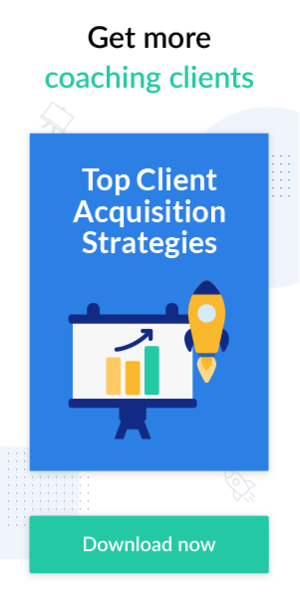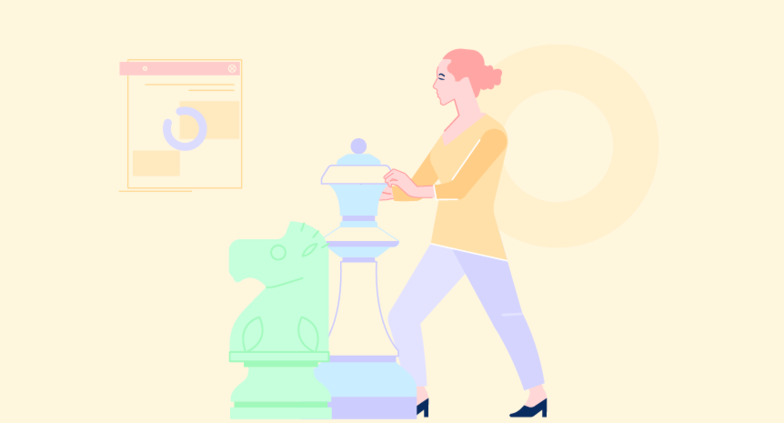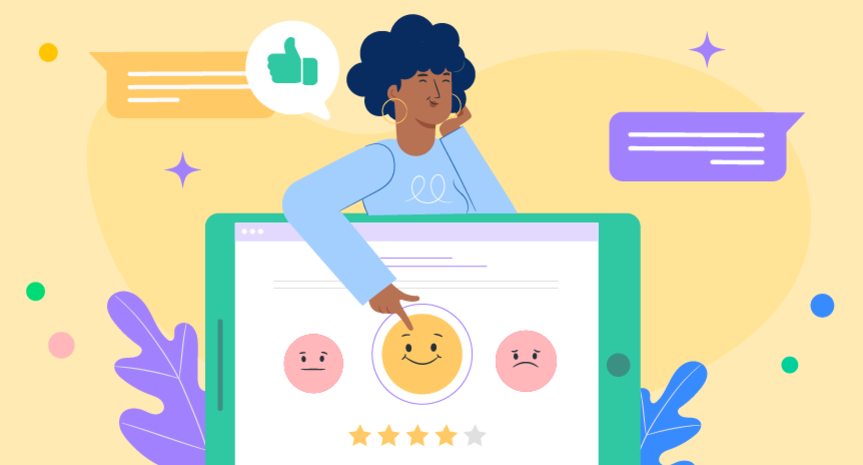Selling individual services might work, but often it lacks stability and can't bring you large profits. The better solution, and the most practical online coaching business model, is to create a high-ticket program. This type of program provides the highest quality services to your clients and allows you to increase profits. You may wonder how to become a high-ticket coach, create a high-ticket coaching program, and make clients want to purchase it for a high price. This guide will give you valuable tips for a successful start.
What is high-ticket coaching?
High-ticket sales items are services or products that are worth their high price. There are examples of high-ticket items from the material world, such as a luxury car or earrings from a famous designer. But what about digital products?
A high-ticket coaching program can be online courses, programs, memberships, or one-on-one coaching sessions that promise clients transformative results. To develop a high-ticket coaching program, you should plan and create the program’s initial steps and test their effectiveness with your existing clients. For example, you could create premium personal consultations and put them at the top of your coaching service offers.
A perfectly crafted high-ticket coaching program can be beneficial for both you and your clients. You, as a high-ticket coach, can work with fewer clients (with those who can afford to pay a higher price) but earn more, while your clients can achieve superior results after finishing your top-notch program.
Top 3 attributes of high-ticket coaching
A high-ticket coaching program ensures your clients can get incredible results within a specific time frame. Learn more about what attributes distinguish a high-ticket coaching program from an ordinary one and help make your program a success.
- Result-oriented structure. Clients who are ready to pay a high price for coaching services are serious about solving their issue. In addition to promising great results, you need to structure your coaching program in a way that highlights your clients’ measurable progress.
- High price. Programs created with maximum skills and effort cost more. Since they can bring clients closer to their desired goals, their price is higher than average.
- High expectations. Higher prices lead to higher customer expectations, from an explicit coaching program framework and consistent support to detailed explanations of every coaching program’s action. It’s an all-inclusive luxury service where every step is clear and straightforward.
What is a high-ticket coaching funnel?
A high-ticket coaching funnel is a marketing approach for coaching programs that cost more than your other services. You can broadcast your high-ticket coaching program in various ways, e.g., send emails, write posts on social media, talk on webinars, etc.
To understand how to build a high-ticket coaching funnel, take a look at these steps:
- Make a detailed portrait of your client persona — specify who your ideal client is.
- Showcase your professionalism — tell your target clients how you can solve their pain points through your brand story.
- Create your unique value proposition — assure your potential clients that you're the best fit for them (we'll explore this topic further in detail later). Your value proposition is about something more than selling expensive courses. You could consider creating a free checklist for your clients that provides feasible solutions. Or you could give your prospective clients another valuable offer that costs you little. Once you present a prospective client with a free offer (like a PDF, webinar, or lead magnet), you get an email address.
For example, the most accessible high-ticket coaching funnel type is a webinar. Clients can meet you face to face, talk with you, ask questions, and decide if you're the right coach for them. The webinar funnel looks like this:
- Clients register for your webinar by filling out the registration form
- Clients receive a "thank you" email with the link to join your webinar
- You provide clients with a high-ticket coaching program offer
Your goal is to encourage at least 10% of your audience to enroll in your premium services and, as a result, increase your revenue.
How to create a high-ticket coaching program
Creating a high-ticket coaching program requires a lot of effort, creativity, financial investment, and time. However, if done right, this program should not only pay off for you, as a coach, but also exceed your clients’ expectations. Let’s look at what strategies work best when it comes to creating a high-ticket coaching program that will be worth your investment:
#1 Define your niche
As the saying goes, "Jack of all trades, master of none". This is why it's essential to choose a niche or two and specialize in it or them to deliver top-quality services and be able to deliver specific results. With specialization, you can also get clarity when developing your business and can better understand clients’ needs. Moreover, you can build coaching programs tailored to your expertise and increase your clients’ confidence in your services.
You can also create precise messaging. For example, if you’re a nutrition coach you can highlight health issues that your clients frequently have and explain how your coaching methods can help change their dietary habits.
Focusing on one niche can make deepening your knowledge more attainable. You can complete additional training courses, get certificates, and elevate your expertise to the highest level possible.
#2 Stay focused on one persona
To design a high-ticket coaching funnel, you need to envision your ideal coaching client and create a clear client persona.
A client persona is a detailed description of a single client who represents a specific audience segment. It’s a generalized picture of a hypothetical target audience. Try to generalize your clients to understand:
- Who is your typical client?
- What are their pain points?
- Can they afford high-ticket services?
To create your ideal coaching client persona, take three easy steps:
- Collect client data. Investigate all the data you have about your existing clients. You can get this information from social media, client surveys, interviews, and client relationship management systems (CRM).
- Describe your clients. When describing your clients you need to consider demographic and psychographic factors.
- Complete your ideal customer profileCP. You can find and use a ready-made ideal client profile template and tailor it to your specific client.

To attract new and retain existing clients you should always keep your potential coaching clients in mind. In this article, you’ll learn what an ideal client profile is and how to create one.
#3 Create your unique value proposition
A value proposition is the basis of your coaching business. This is what differentiates you from competitors, as well as what helps you reach clients and gain authority. A clear unique selling proposition helps clients decide what coach to choose from all specialists on the market and answers the fundamental question, "Why should I choose this specialist?"
Here’s an example of a great value proposition:
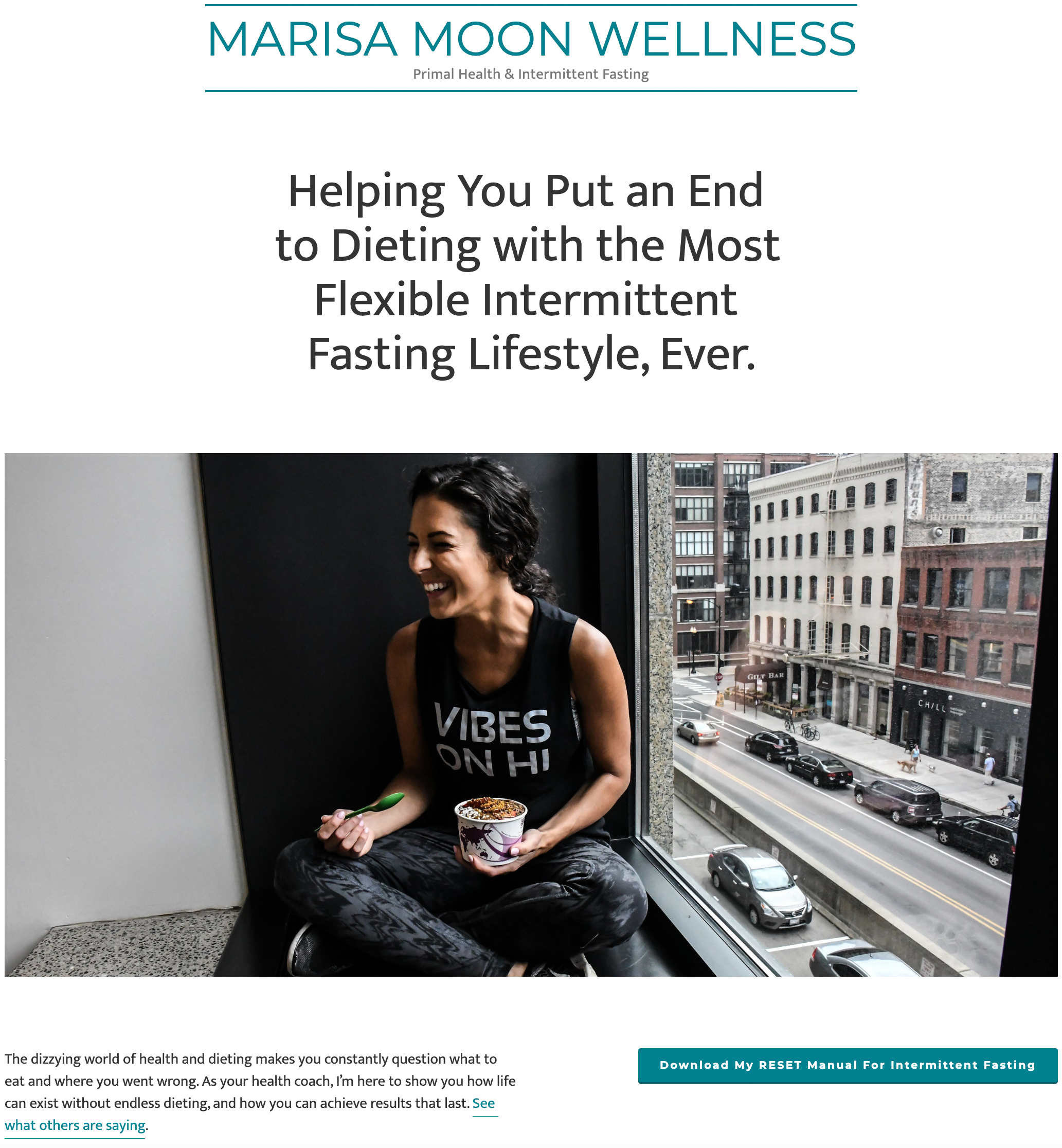
Here, we see a clear statement with a specific specialist’s offer and call to action (CTA) that conveys the coaching program’s values.
To stand out from your competition, you need a well-established, unique selling proposition. Read about a USP, why you need it, and how to create one here.
#4 Define your signature services
Your signature program is your program's framework. In the next part of this step-by-step coaching program guide, you need to outline every step to achieving the client’s goals. Look at what you should do at this stage:
- Identify a measurable result your clients can achieve after finishing your program.
- Based on the outcomes you outline, define the key topics (concepts) you will work on.
- Prepare content and additional resources to support your clients. These can be tips, unique methods, valuable strategies and techniques, video materials, etc.
- Create something actionable that clients can implement in their lives straight away, for example, ready-made scripts, checklists, templates, or cheat sheets.
- Add true stories and experiences from your previous or existing clients to your signature coaching framework. Share their thoughts, experiences, and achievements with new and potential clients.
- Incorporate bonuses to help clients attain their desired results faster and easier. You can complement your coaching program with online seminars, video tutorials, YouTube podcasts, etc.
#5 Create a valuable small offer
Once you have a client base, you can start mastering your coaching program funnel by creating low-cost offers that get your clients to enroll faster.
A low-cost offer shouldn’t require much effort or time. For example, these might be webinars, ebooks, or templates for download, brief YouTube courses, or worksheets to be used as supplementary items for your coaching program. Such offers could increase clients’ interest in your more expensive and comprehensive programs.
#6 Bundle your services
Be creative and offer your clients various services that provide extensive experience and new knowledge to make your coaching programming more diverse. Here are some coaching session offers that you can successfully combine:
- Group sessions. Group coaching sessions can be provided as educational seminars, workshops, online webinars, life coaching classes, or something else, depending on your niche.
- Small group calls. You can divide your bigger group into smaller subgroups and let clients work together, brainstorm ideas, and share experiences.
- Private coaching. As a bonus for participating in your referral program, you can provide personalized coaching consultations. Or you can let clients regularly book time slots for private consultations on your calendar.
- Live sessions. Live coaching events allow people to discuss key issues. These could be virtual events or offline gatherings where you address topics your clients are most interested in.
- Q&A forums and sessions. This format is a great way to give your clients a voice and let them express their opinion and the perfect opportunity for you to answer questions and talk to clients face to face.
#7 Price your coaching program
When it comes to pricing, you should find the best pricing strategy for your business model. Let's find out what payment strategies exist.
- Hourly pricing — clients pay per coaching session. However, clients may lack consistency and a strategic vision during their coaching program’s process if they pay per hour.
- Monthly payments — clients pay a fixed amount of money every month for your services.
- Package program — clients pay for a package of your coaching services, such as a two-month program that includes ten sessions and three private calls as a bonus.
Look at these basic coaching billing models in detail in this guide.
Selling high-ticket coaching
Once you prepare your high-ticket program and set up your pricing plans, you need to determine what marketing strategies can help you successfully sell your high-ticket coaching items. Below you will find seven useful tips for selling high-ticket coaching.
#1 Use Facebook ads
If you’re just starting to sell your high-ticket coaching program, it’s better to begin with social media ads or YouTube podcasts. However, if you already have clients and want to get more sales and traffic, Facebook ads may be a better fit. Since Facebook captures its users’ data, it allows you to target your audience very specifically and find your ideal clients faster.

Many other advertising platforms can’t offer such explicit targeting, so you would need to spend more on ads. With Facebook ads, you can target website visitors based on various factors, like gender, age, preferences, etc.
Pro tip: Set a minimum of $5 to up to $50 per day aside for your Facebook ads and run them from 1 to 3 months.
Check out some of Facebook’s pricing options:
- Сost-per-click (CPC) — you pay for clicks on your ads
- Cost-per-mille (CPM) — you pay when your ads have been displayed 1,000 times
- Cost-per-action (CPA) — you pay for a potential client’s action on your online platforms, such as registering for a workshop

#2 Create a high-quality landing page
A landing page differs from a website in its structure and goal. A website usually consists of several pages, including a contact page, client testimonials, resources section, etc., and is educational and informative. A landing page is a standalone web page that primarily focuses on generating more quality leads, such as purchasing your services or booking a session.
Check out some must-have attributes of a professionally crafted landing page:
- clear and catchy headlines that immediately grasp clients’ attention
- subheadings with specific points related to your coaching niche
- clients’ common challenges and pain points
- precise descriptions of your services
- imagery and other visual elements to make your landing page look compelling and eye-catching
- testimonials and ratings from existing clients to increase authority
- effective call to actions (CTAs) to convert visitors into clients
- a customizable registration form to collect client data for further engagement
Here’s an example of a quality coaching landing page:
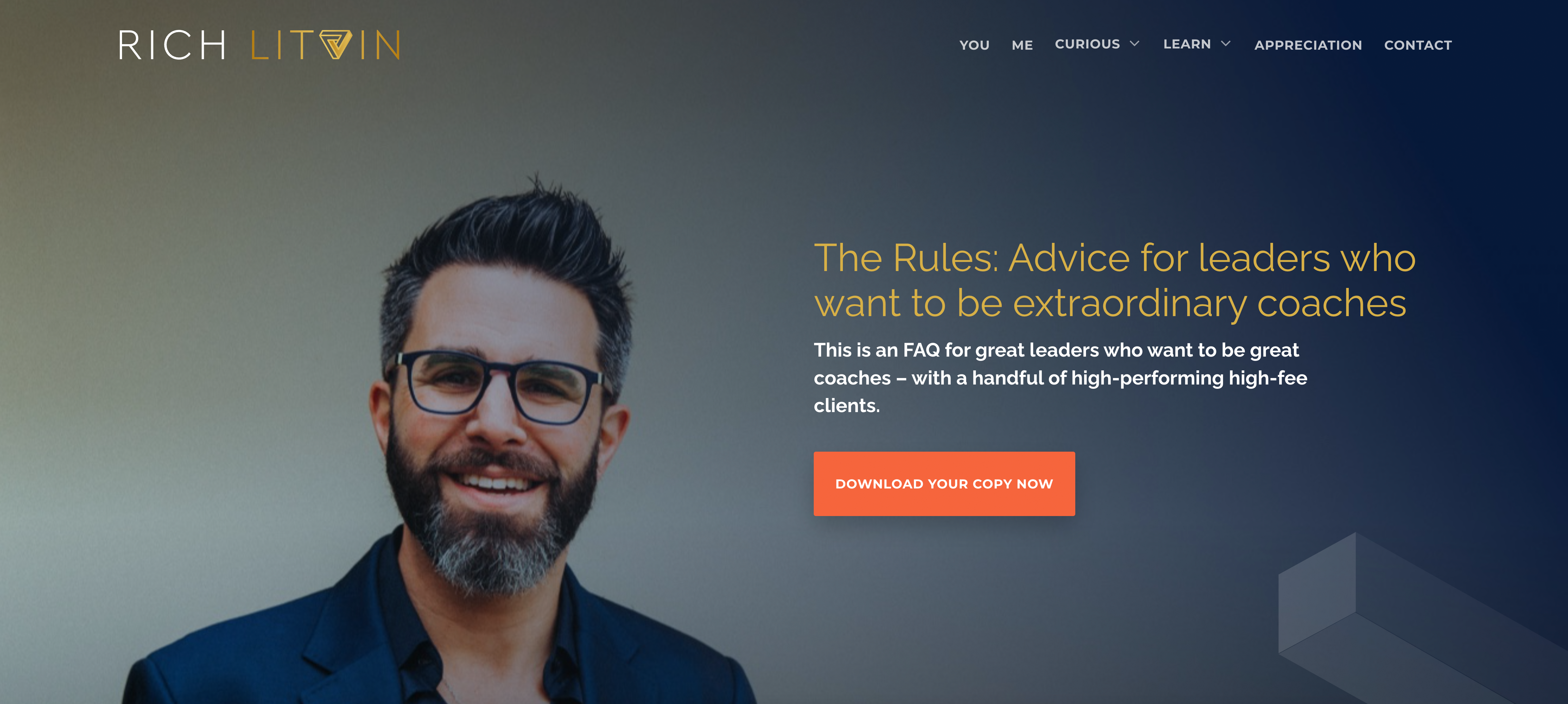
This is a professional landing page with a simple, clear message and a specified call to action that offers visitors a free copy right away.
#3 Design a booking page
Make the client experience seamless and flexible from your first interaction.
For example, by using ExpertBox coaching software, you can easily integrate a booking page into your account, website, or another online platform and customize a booking page according to your brand style guide (choose colors, button type, add text, etc.).
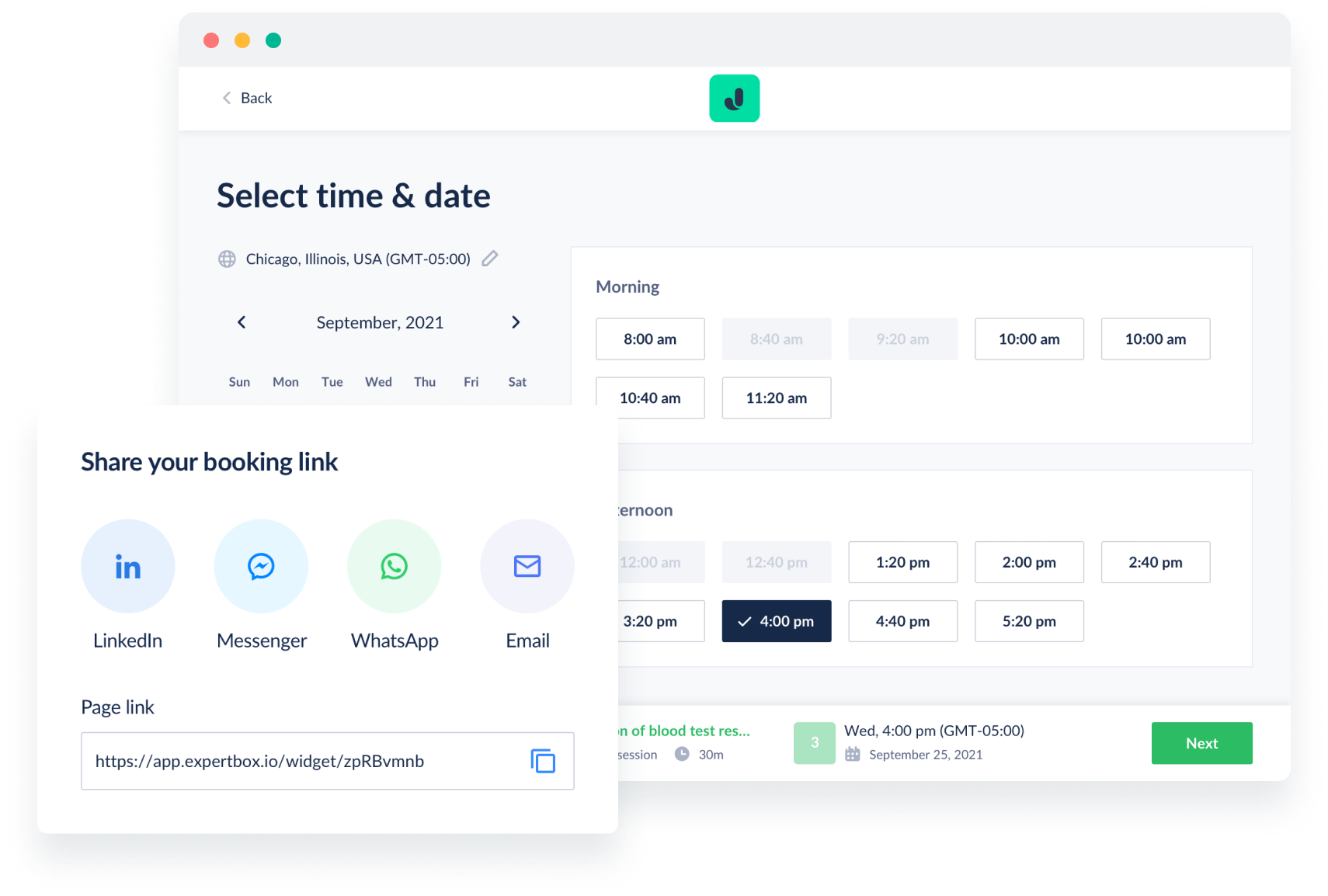
You can set your available hours and add as many services to the booking page as you want. All your services’ details will be displayed on a panel and will be visible to your prospective clients.
#4 Nurture clients on social media
Facebook is the largest social media network, with over 2 billion monthly users. This means that roughly 36.9% of the world’s population uses Facebook. There are also over 1 billion Instagram users across the globe, with 500 million people using the network daily. Warming your clients up on these social media platforms is essential for your high-priced offers to be noticed and explored by your target audience. You can prepare and put into practice sales scenarios to increase social media engagement. The most typical scenarios are:
- updating your social media page design for new product launches (add a description, links, and attached materials such as reviews)
- warming up your potential clients with stories and posts highlighting a specific problem (which will be solved by your special offer)
- using problem solving storytelling to show how you would deal with the problem
- introducing a free webinar that will help clients deal with their problems
- launching the main high-ticket product after the webinar
With the help of social media networks, you can always keep your clients in the loop. When you have news and updates related to your coaching programs, with social media, they can always take advantage of your valuable offer.
#5 Plan your email funnel
An email funnel is part of your high-ticket coaching funnel. You can gather emails by offering a free lead magnet as a reward for a client’s email address. Lead magnets are typically brief and precise marketing copy, such as checklists, infographics, short videos, cheat sheets, etc., that address common client issues. You can also collect client contact details during online and offline meetings, webinars, and other events.
Your email funnel should be consistent and keep your clients’ attention. Plan your email list to include various emails and choose the days you will send each email to your clients. Your one-week email sequence could look like this:
- accepting email to confirm client’s enrollment
- gifting email to show your clients that you appreciate their enrollment in your program
- features description email to highlight the values and benefits of your coaching services
- case study email to demonstrate how others saw successful results after completing your high-ticket coaching program
- FAQ email to provide answers to the most common questions
- closing email to make the deal
#6 Unlock the power of a discovery call
When talking to a client for the first time, you should be professional and friendly without pushing them to immediately buy your services. Clients need to make sure you’re the right fit and know what they’re paying for.
Tip: You can use the following script as a sample template for your discovery call.
Hi [Client Name],
How are you today? I’m very excited to talk with you.
Before we move on, I’d like to assure you that everything we talk about now is absolutely confidential.
Now I’m going to ask you a few questions to understand your pain points and how I can help you solve them. Okay?
[If YES]
Perfect. Then let’s do it.
I would like to know where you think you are stuck or feel lost and what changes you seek in your life so I can offer unique, practical solutions to help you move painlessly from your current state to achieving your goals. [After the client talks, you can describe the client’s situation from your professional viewpoint and offer possible ways to help them get the results they want.]
I’m ready to discuss the details of our coaching program and answer your questions. How do you feel about that?
#7 Close the deal with consistent follow-up emails
Follow-up email campaigns do not directly sell your services but do show that you care about your potential clients, are ready to help, and always have something valuable to share. Below are some ideas for organizing your follow-up email series:
- Send a follow-up email right after the discovery call to thank the client and offer a gift
- Add a discount for their first purchase
- Mail in-depth materials, such as articles, case studies, videos, and other resources related to the client’s issue
- Send a virtual gift card
Wrapping up
Now that you know the step-by-step process of creating a high-ticket coaching program, consider what else is required to have a successful start.
Comprehensive coaching software like ExpertBox can make your workflow, client management, document management, and client onboarding process more efficient and productive.
Subscribe to our newsletter to gain insight into the coaching business.
FAQ
-
High-ticket sales items are services or products that are worth their high price. A high-ticket coaching program can include online courses, programs, memberships, or one-on-one coaching sessions that promise clients transformative results.
-
The high-ticket coaching funnel is a marketing approach for coaching programs that cost more than your other services. For example, you might create premium personal consultations.
-
Check out what strategies work best when it comes to creating a high-ticket coaching program that will be worth client investment:
- Define your niche
- Stay focused on one persona
- Create your unique value proposition
- Define your signature services
- Create a valuable small offer
- Bundle your services
- Price your coaching program
-
Once you prepare your high-ticket program and set up your pricing plans, check out what strategies work best when selling a high-ticket coaching program.
- Use Facebook ads
- Create a high-quality landing page
- Design a booking page
- Nurture clients on social media
- Plan your email funnel
- Unlock the power of a discovery call
- Close the deal with consistent follow-up emails
